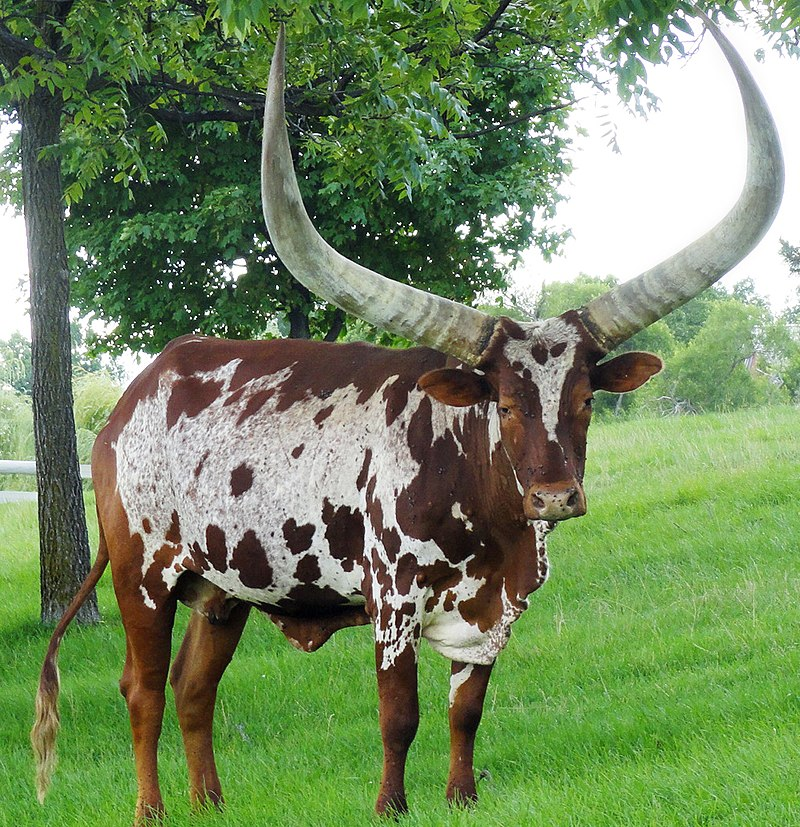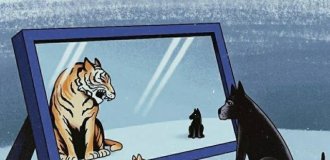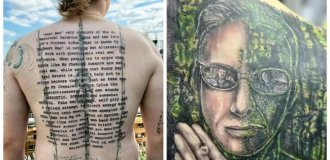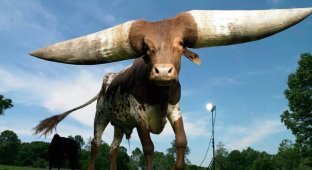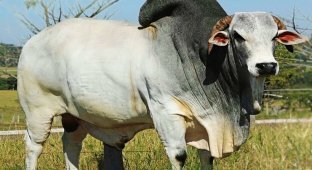Watussi: why do these African cows have such huge horns? (10 photos)
In fact, the horns of these cute cows are simply gigantic. In length, such accessories reach 2.5 meters between two extreme points; each horn can weigh about thirty to forty kilograms. The thickness of Vatussian horns can be 50 centimeters. 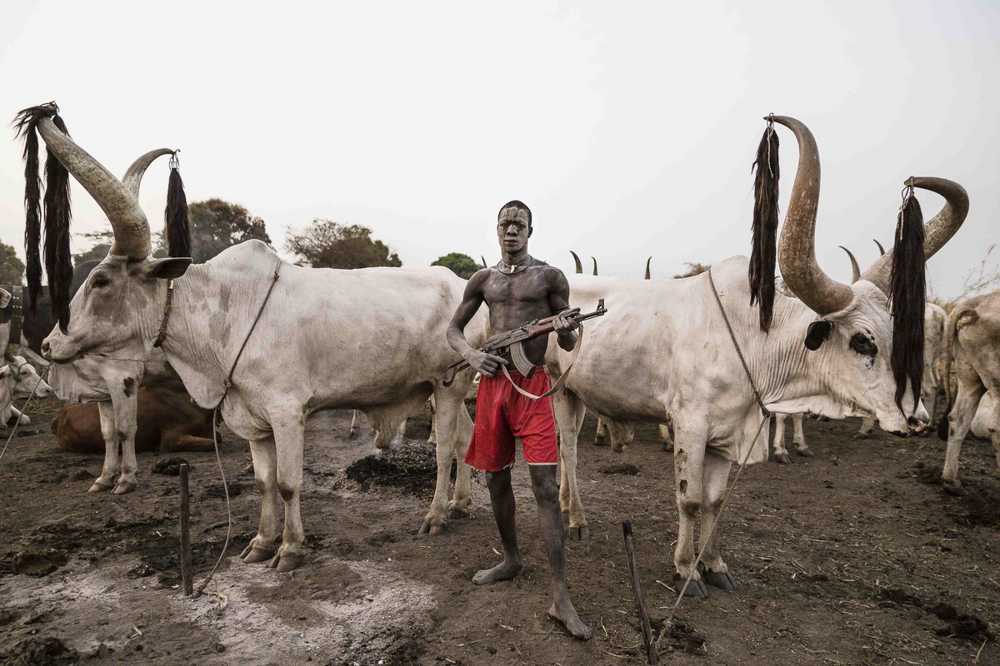
But why did a cow from the Dark Continent need such a substantial headdress? It’s simply hard for her, poor thing, to carry around such belongings.
And it was like this. According to biologists, five thousand five years ago the famous European aurochs, the ancestor of our beloved cows, suddenly reached Africa. And I met a hot local beauty there - an Egyptian hot humpbacked zeba cow. The horned one fell madly in love... Well, the Egyptian woman reciprocated the feelings of the visiting European guest. 
From this amorous union those very Watussi cows were born. From the father-tour they inherited huge thick horns and a pumped up powerful body. From the native mother - the ability to eat what would make a pig vomit, and survive in the most severe heat. 
All together became the key to the success of Watussi, which today belongs to the category of special cattle. After all, the weight of such a brownie can easily jump over 400-800 kg.
Never before has the word “gored” sounded so realistic :) But don’t be afraid - the Watussi is actually an extremely peaceful creature. Only a bunch of ant-grass can offend in vain.
Why are such horns needed? 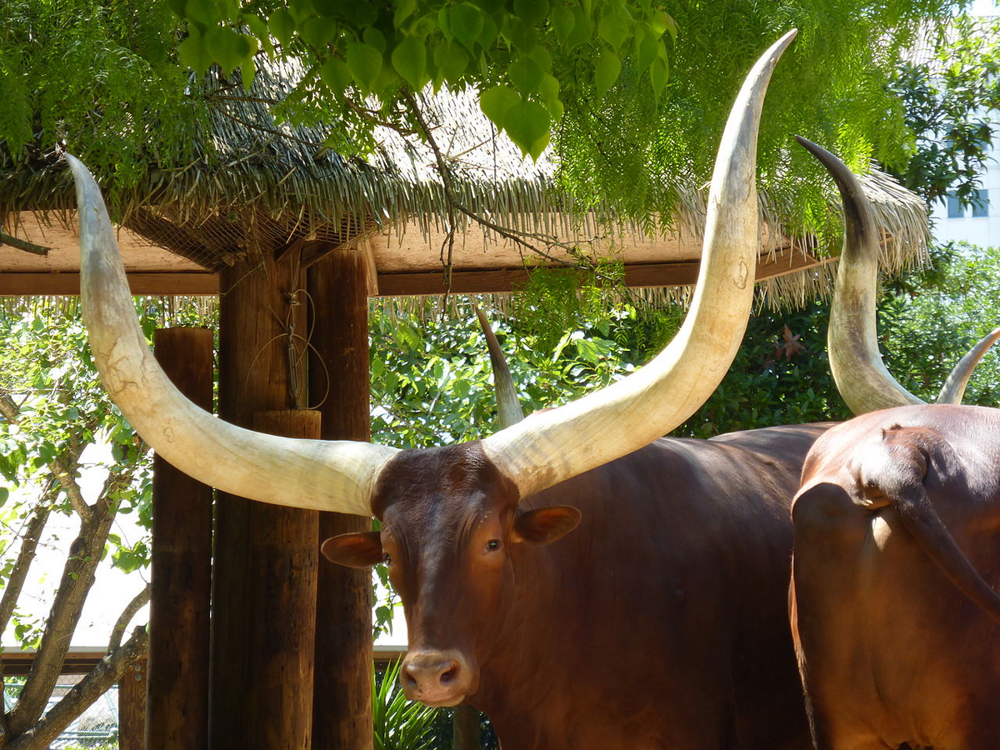
The colossal horns of the Watussi, by the way, are not at all for beauty. These are a kind of huge heat sinks-radiators, penetrated by a network of blood vessels.
The hot cow's blood running along these horns cools down and gives coolness to the rest of the body. At the same time, the horns protect the head from overheating. In general, something like a natural Conder with a hat. For the same purpose, say, an elephant has huge ears.
That is, our heroine in such a “cap” can easily hang out for hours in the worst sunshine. There is absolutely no fear of fainting from the heat or the consequences of sunstroke.
Very relevant for the expanses of central Africa with its regular plus 50 degrees. Moreover, with this air conditioner he can attack the enemy! 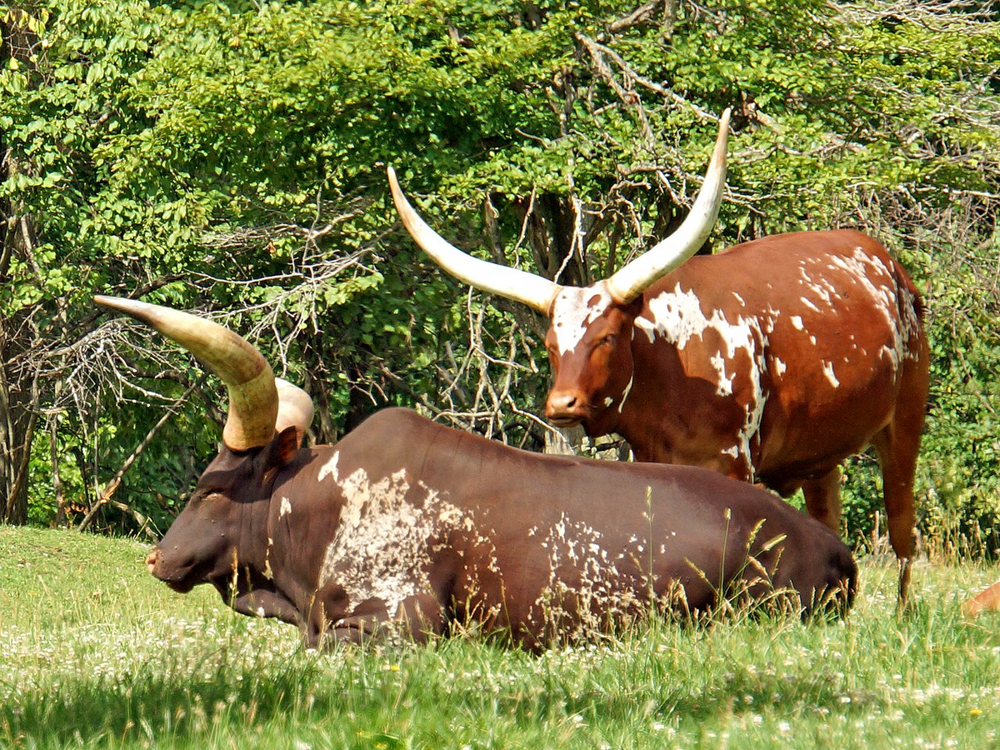
For the most part, Watussi graze in the herds of pastoralists (Nilotic, Bantu, etc.) in central Africa - in Rwanda, Burundi, Angola, Kenya, Uganda, South Sudan. Separate herds of the outlandish Watussi are also bred in America and in the steppe Crimea.
I can boldly say: Watussi is the most horned of the horned. By the way, its horns can be of all shapes - from crescent to completely straight.
Why are Watussi bred? 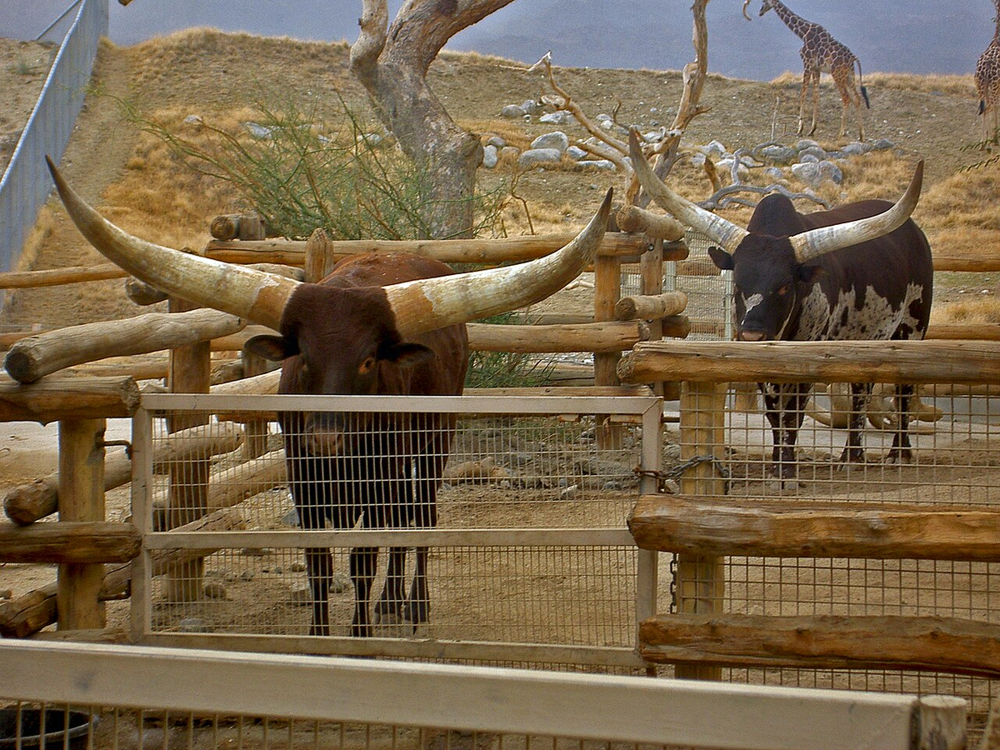
However, Watussi also has a lot of disadvantages. The cow is considered extremely low-productive. It produces little milk - a maximum of three liters per day - very fatty (10%). The meat is also tasteless and tough. Calves are brought in one per year
However, in the African cowless world and Watussi there is a cow - you won’t be able to breed anything else in the yellow hot tropics, dear Masai friend.
Moreover, Watussi is not at all afraid of predators - such horns will send any lion king running. It is extremely resistant to any parasites and local African diseases of cattle.
What do they do with Watussi? 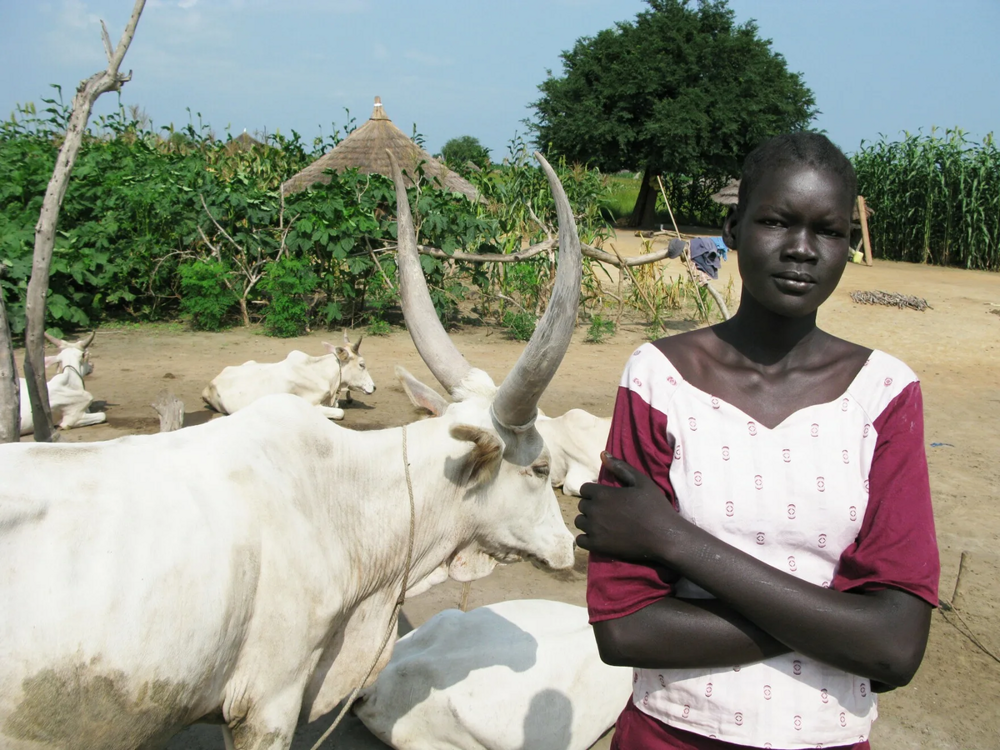
Watussi among the Dinka tribe
Watussi, however, rarely goes under the knife among Africans. Usually she is bred for milk and show off.
This cow is considered a real measure of success among many pastoral African tribes - the same Maasai and Tutsi (who were genocided by the Hutu). The word “Watussi” itself means “belonging to the Tutsi.” 
The Maasai, by the way, love to drink fresh Watussi blood, first diluting it with milk. It's a so-so drink, I tell you. But for the Maasai, the Watussi is essentially a sacred animal.
Dinka and Mandari herders from the newly independent South Sudan simply adore Watussi cows. These guys literally live and sleep surrounded by Watussi. 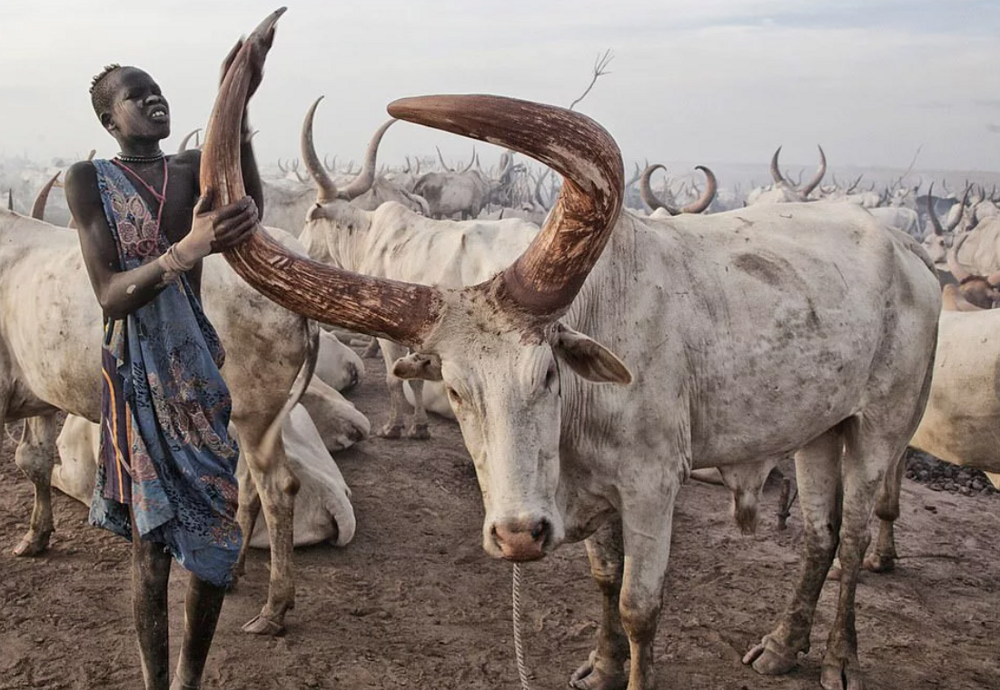
The Tutsi call this animal “inyambo” - “a cow with very long horns” or “insanga” - “miraculously found”. Among other tribes, Watussi may be called differently: for example, among those living in Angola, Nkole - “ankole” (“belonging to Nkole”). 